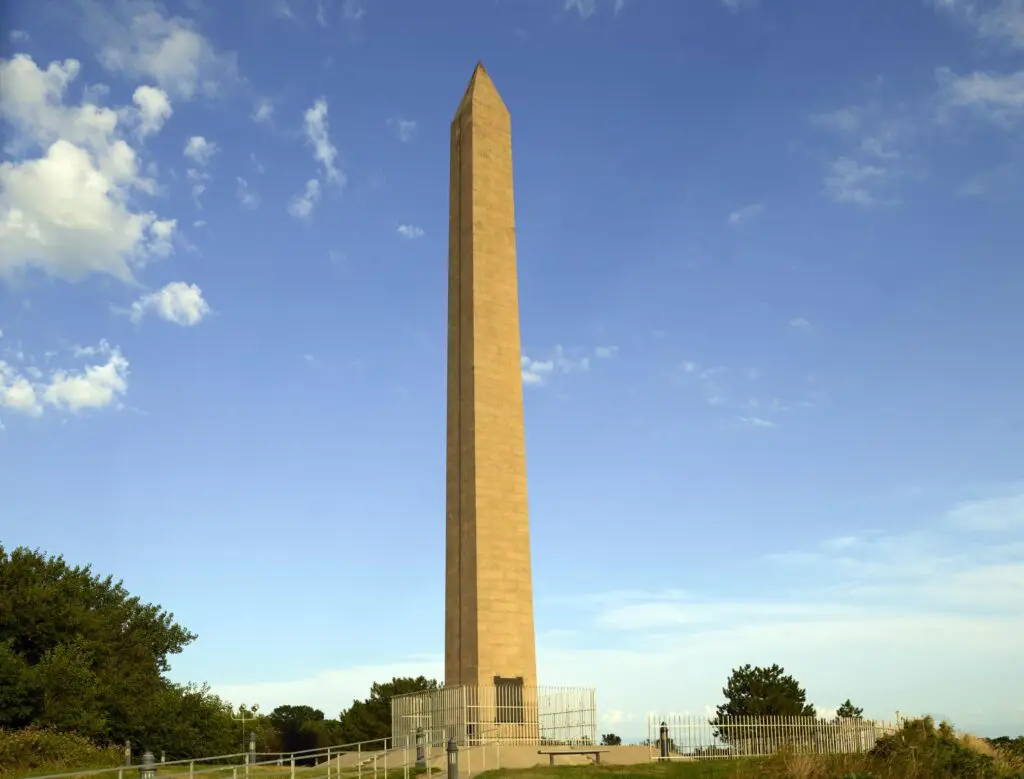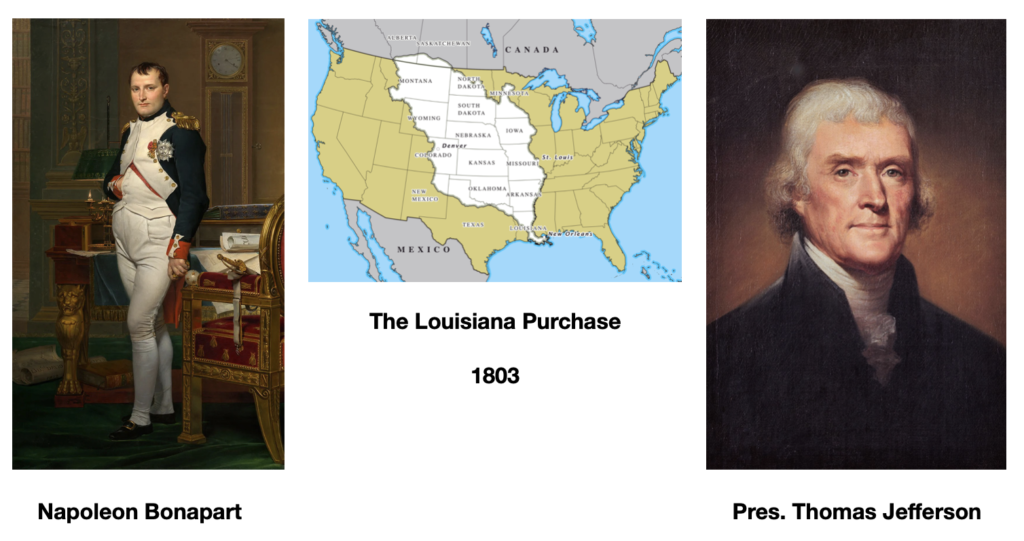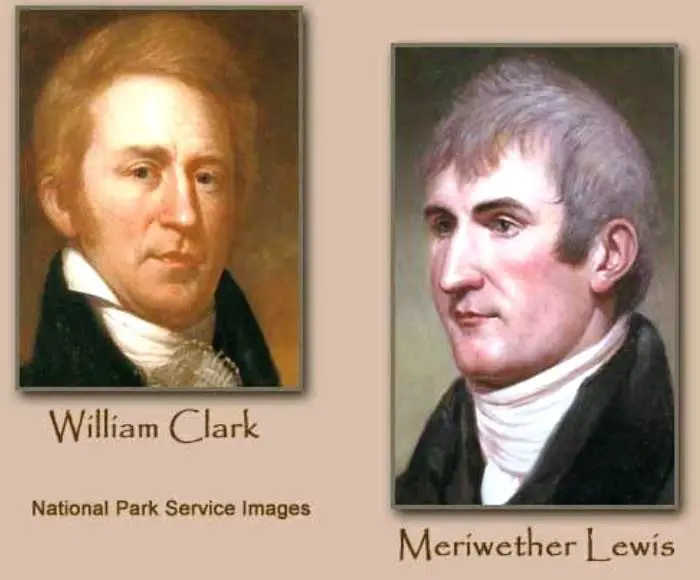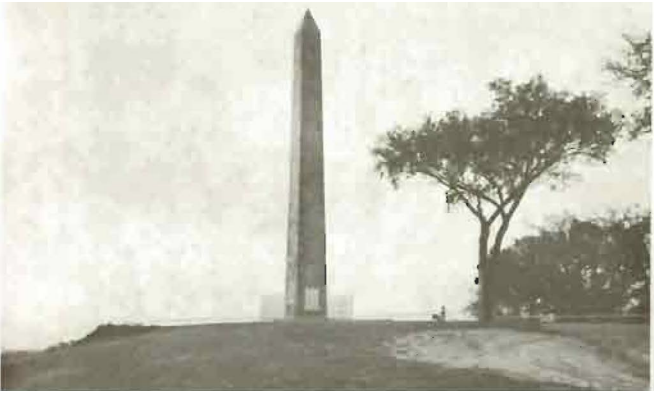The story weaves through history and includes Napolean Bonapart and President Thomas Jefferson

Thousands of people each day and night pass the 100’ tall sandstone obelisk standing high upon what is known as Floyd’s Bluff, just along the southern edge of Sioux City. Many passersby are transient, and curiosity may lead to an Internet search that explains that the Sergeant Floyd Monument marks the burial place of the only person to die during the Lewis and Clark expedition of 1803-1806. They will learn in their search that Sgt. Charles Floyd most likely fell ill as a result of a ruptured appendix, followed by fatal peritonitis, passing away at the tender age of twenty-two on August 20, 1804.
Siouxlanders, who know more than the average Joe about the monument, can be proud of its significance in history. They may know it was America’s first National Historic Landmark (see pages 41-46), having been so designated on June 30, 1960. They may also know that the salmon-colored limestone used to build the obelisk in 1901 came from a quarry along the Kettle River in Sandstone, MN. Some will know that Sgt. Floyd was a relative of Lt. William Clark, second in command of the expedition. Only a few, however, know of the unique but historic connection between the Floyd Monument and the famous Twin Spires at Churchill Downs in Louisville, KY, home of the Kentucky Derby.
Slipping backward in time, it should be recalled that in 1799, Napoleon Bonaparte seized power over the French government at the end of the French Revolution. His need to concentrate his efforts in France motivated him to liquidate French assets in the New World, which resulted in America’s third president, Thomas Jefferson, agreeing to purchase the French-held Louisiana Territory. The deal was sealed in December 1803, and the American government purchased 828,000 square miles of land from France for about 3 cents an acre.

President Jefferson wasted no time in commissioning Captain Meriwether Lewis and Second Lieutenant William Clark to form the Corps of Discovery Expedition and set out to map the newly acquired territory. The expedition’s travails and successes, which concluded in 1806, marked the beginning of a new era in American history, opening the western frontier.

Three years later, Meriwether Lewis was dead. Some folks believe Lewis was murdered, while others make the case that he committed suicide. As of today, we do not know the real cause of his death.
President Jefferson later appointed Lieutenant William Clark as brigadier general of the Louisiana Territory’s militia and the US Agent for Indian Affairs. He married in 1808, and his five children included a son whom he named Meriwether Lewis Clark, after his friend and expedition co-leader.
As an adult, Meriwether Lewis Clark served as a military service officer in the Mexican-American War and the American Civil War after graduating from West Point. While on assignment in Louisville, Kentucky, Clark met, courted, and married Abigail Churchill, who was from a prominent local family. Their marriage produced seven children, including a son they named Meriwether Lewis Clark, Jr., in 1846. Abigail died when Meriwether Jr. was just six years old, and the young boy was sent to live with his aunt and her two sons, John and Henry Churchill.
The Churchills were wealthy, which afforded Meriwether Lewis Clark, Jr. the opportunity to travel abroad, where he acquired a love of horse racing. When he returned to Louisville, he was determined to build a racetrack for horses. John and Henry Churchill donated the land and provided the financial backing for Clark, Jr. to build the track.

The track opened in 1875, and the very first Kentucky Derby was held that same year. The success of the Kentucky Derby is undeniable, and today, the track stands as a proud tribute to its builder, Meriwether Lewis Clark, Jr., grandson of William Clark, who buried his friend, relative, and companion, Sgt. Charles Floyd on that high bluff overlooking the Missouri River near Sioux City. One final but somber note regarding Meriwether Lewis Clark, Jr. He died as a result of a self-inflicted gunshot in 1899 after losing his fortune in a stock market crash.

America’s first National Historic Landmark: the Sergeant Floyd Monument,
Sioux City, Iowa, erected 1901, designated June 30, 1960.

Welcome to 3-Minutes A Day University, where you can learn a little about a lot of things every day in three minutes or less. We help you expand your knowledge and understanding of the real world, and 3-MAD University is tuition-free. Our wide-ranging syllabus includes a fascinating insight into topics including Health and Medicine, Science, Sports, Geography, History, Culinary Arts, Finance and the Economy, Music and Entertainment, and dozens more. You will impress yourself, your friends, and your family with how easy it is to learn facts and perspectives about the world around you. One topic you will never find covered is politics. We hope you enjoyed the previous three minutes. If you liked this post, please pass it along to a friend.
Was this email forwarded to you? Subscribe Here.
© Copyright 2024. 3-Minutes A Day University All Rights Reserved. Unsubscribe


Rick Uhl
Learn something new every day.0
176057401
I just love those little tid-bits, Rick. Thanks for the comment. Nice to see that you are a reader. Feel free to sign up so you never miss a post. http://www.3maduniversity.com Sunscribe
Kris
Pamela Worrell
Very interesting detailed story! Who knew? A whole awakening of renewed respect!👍